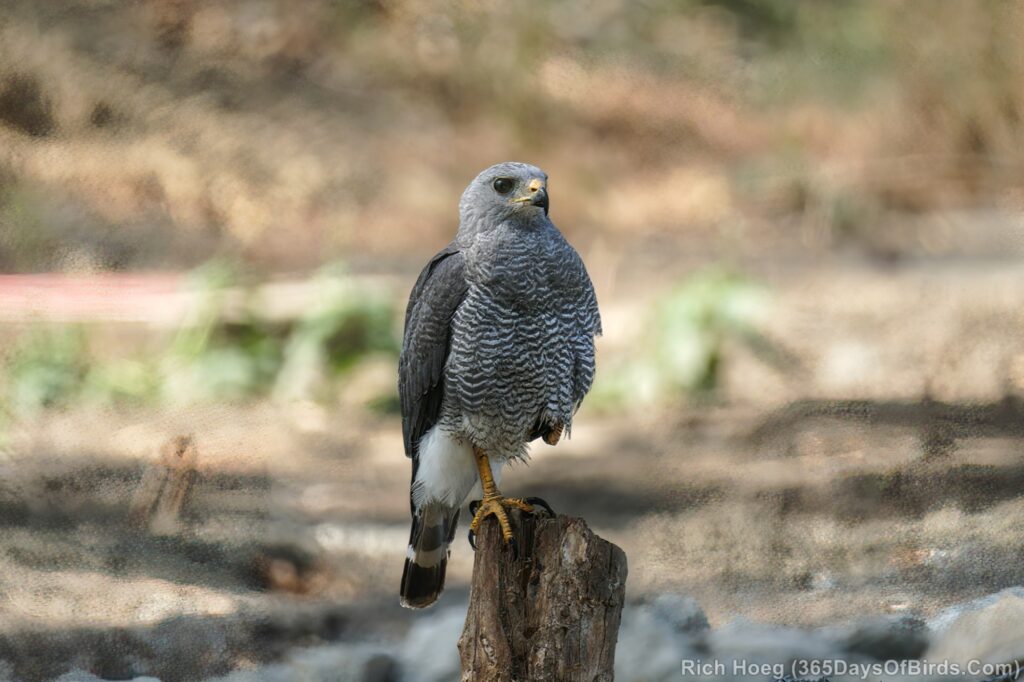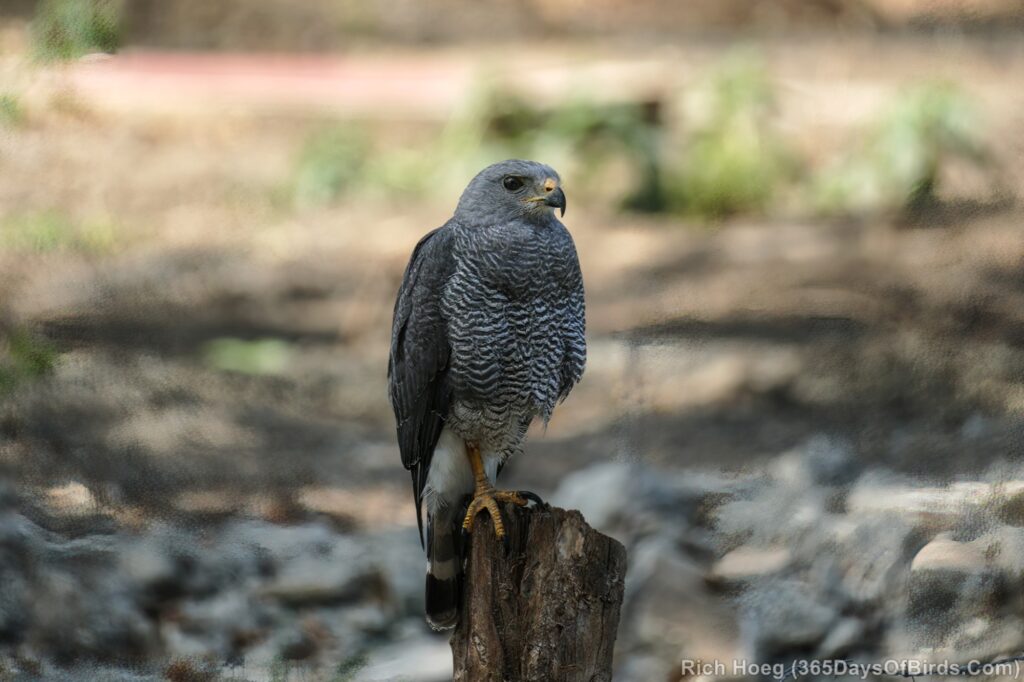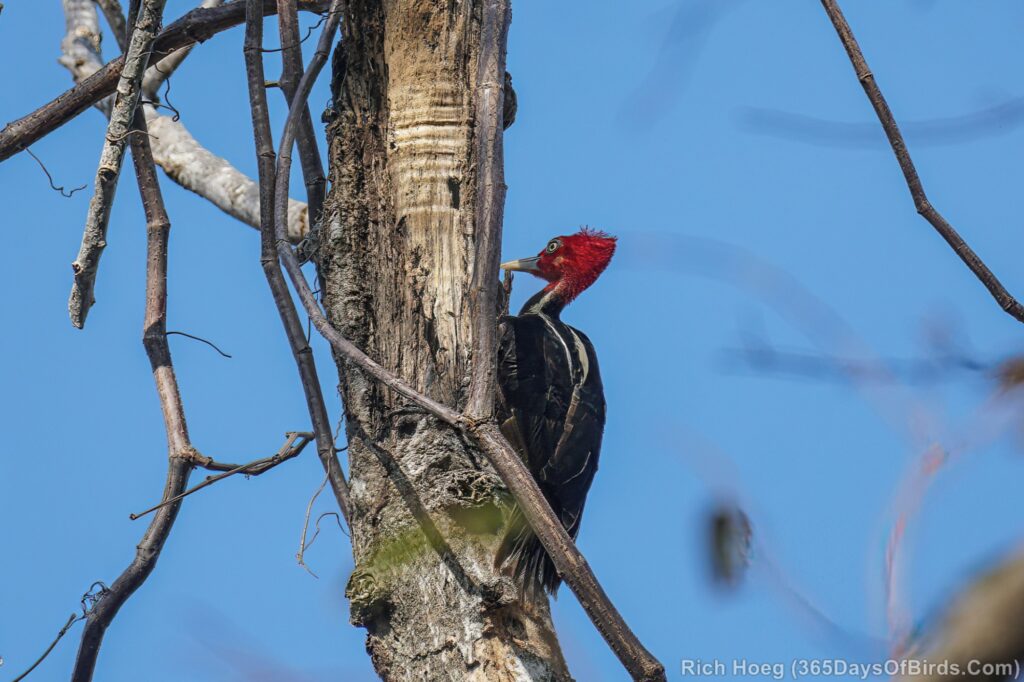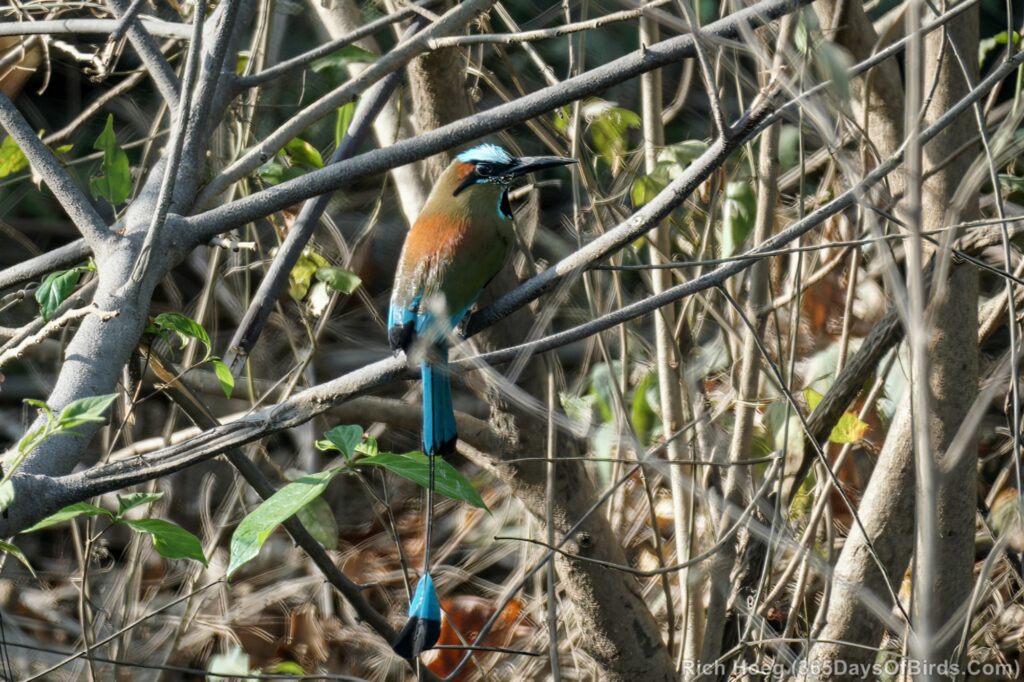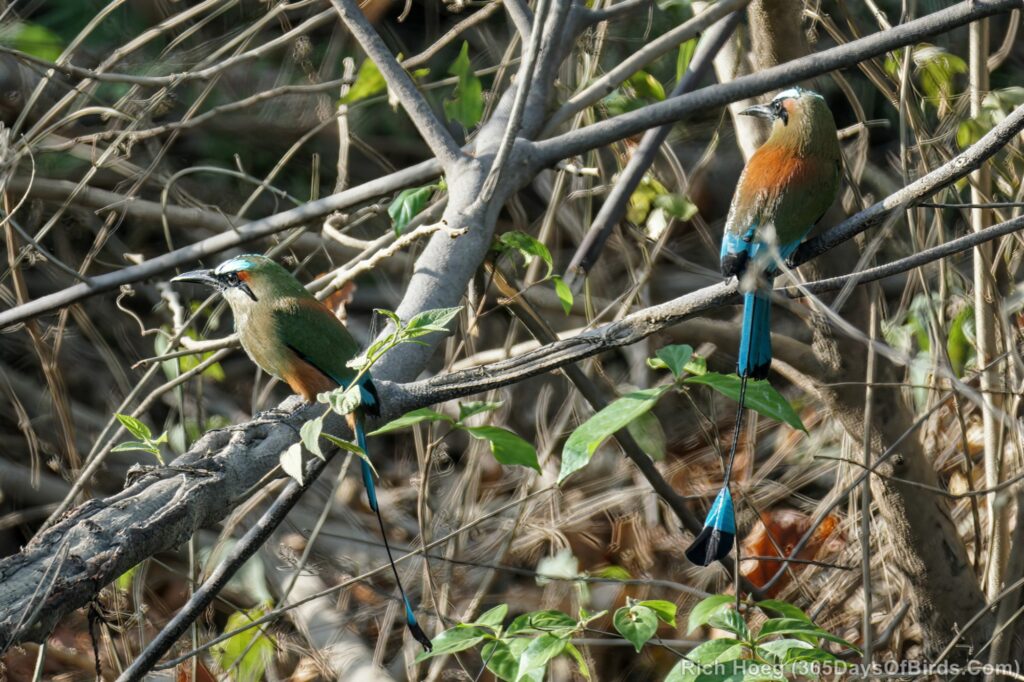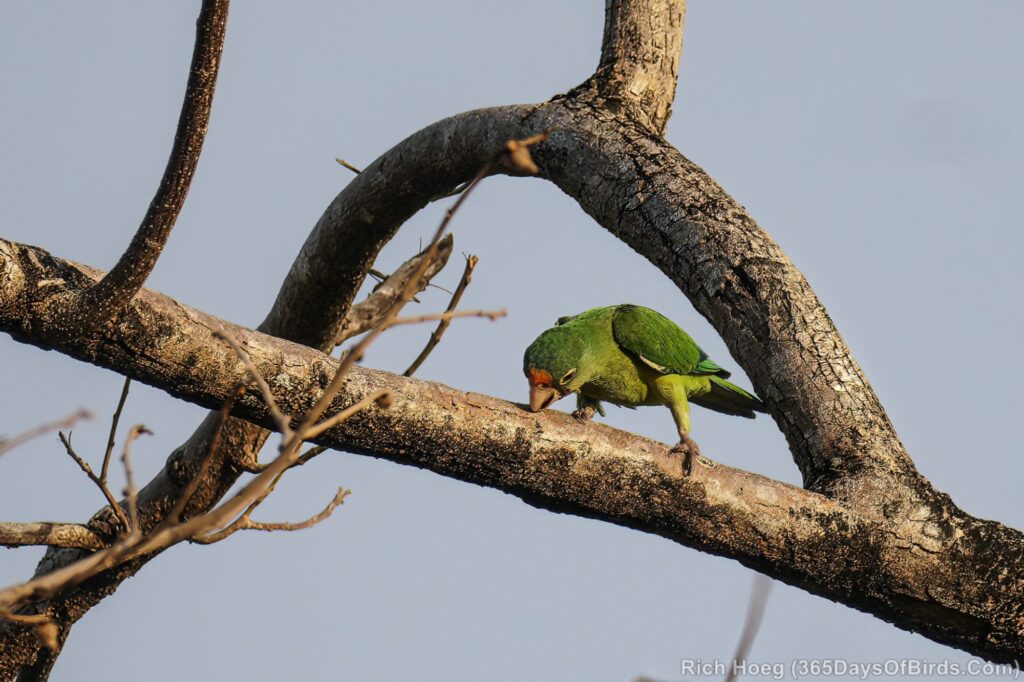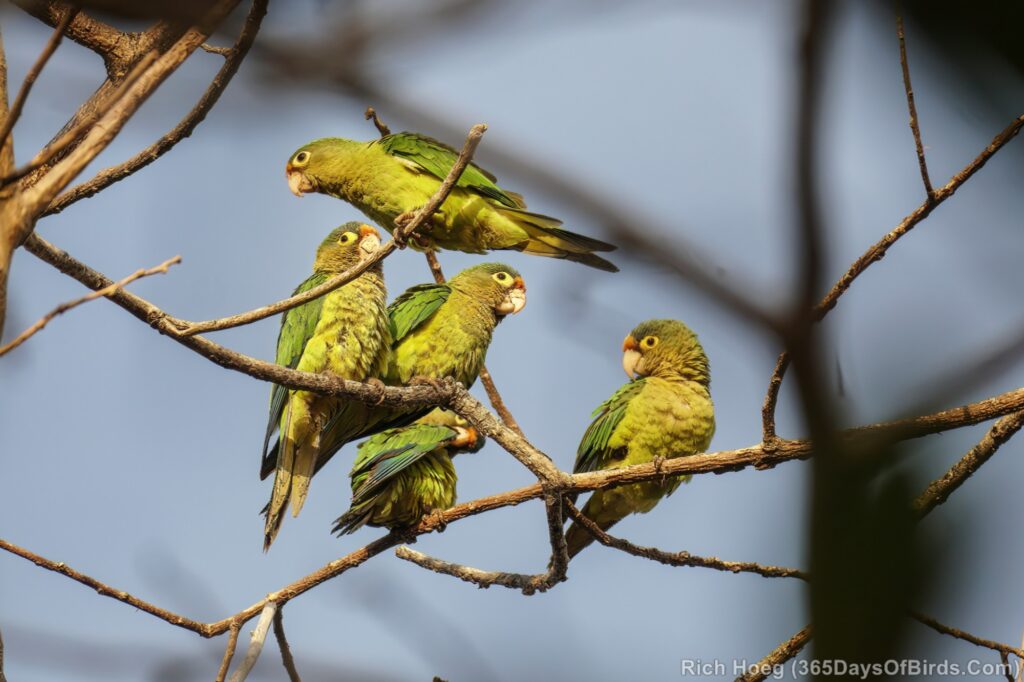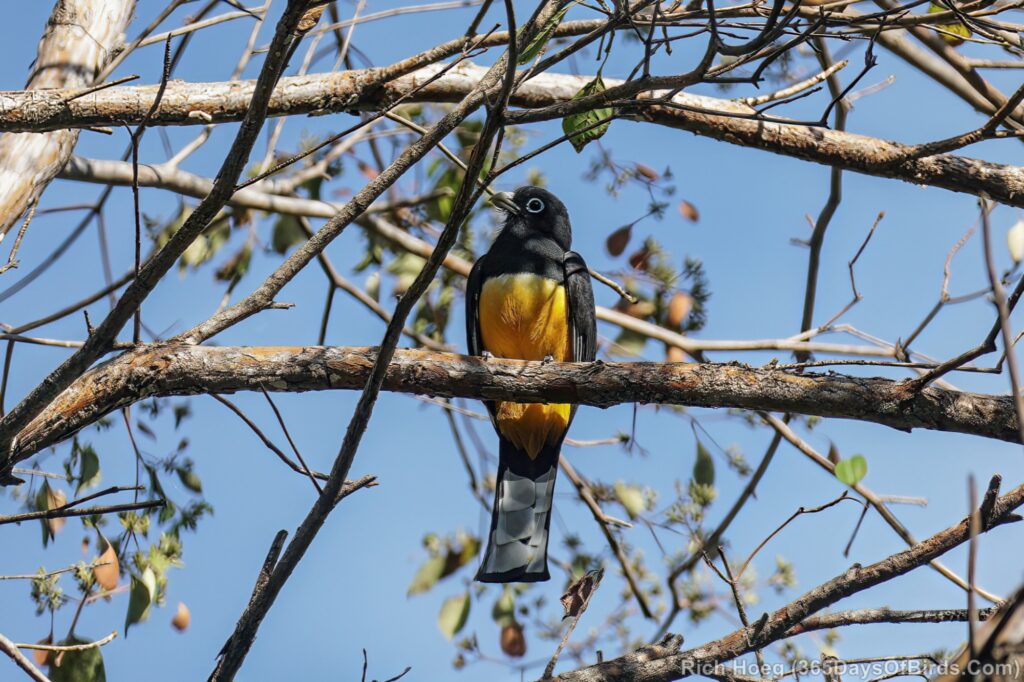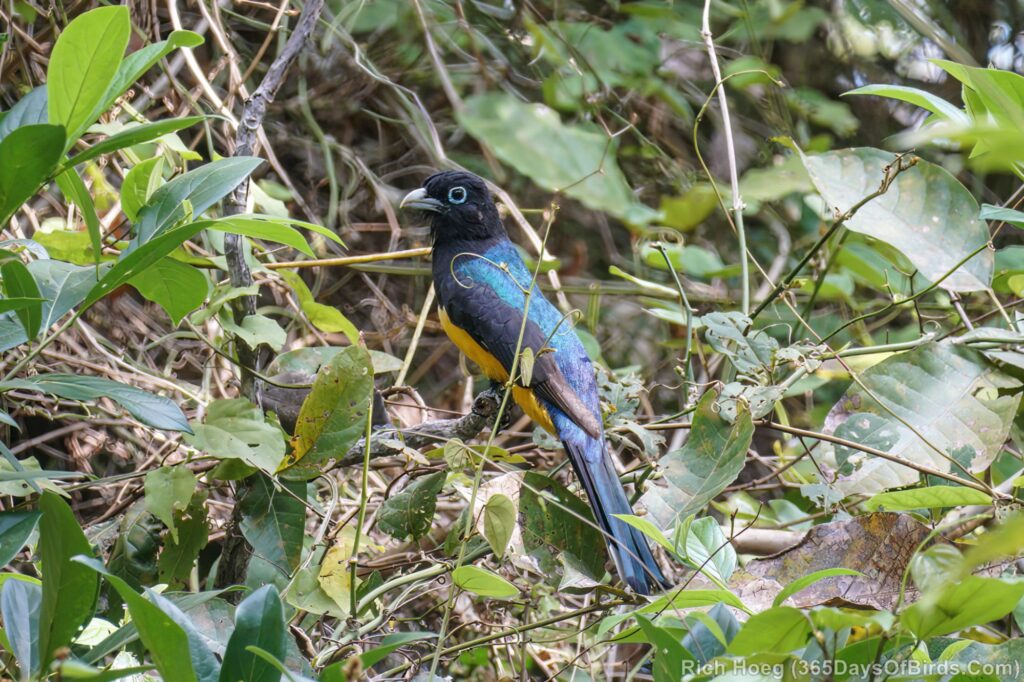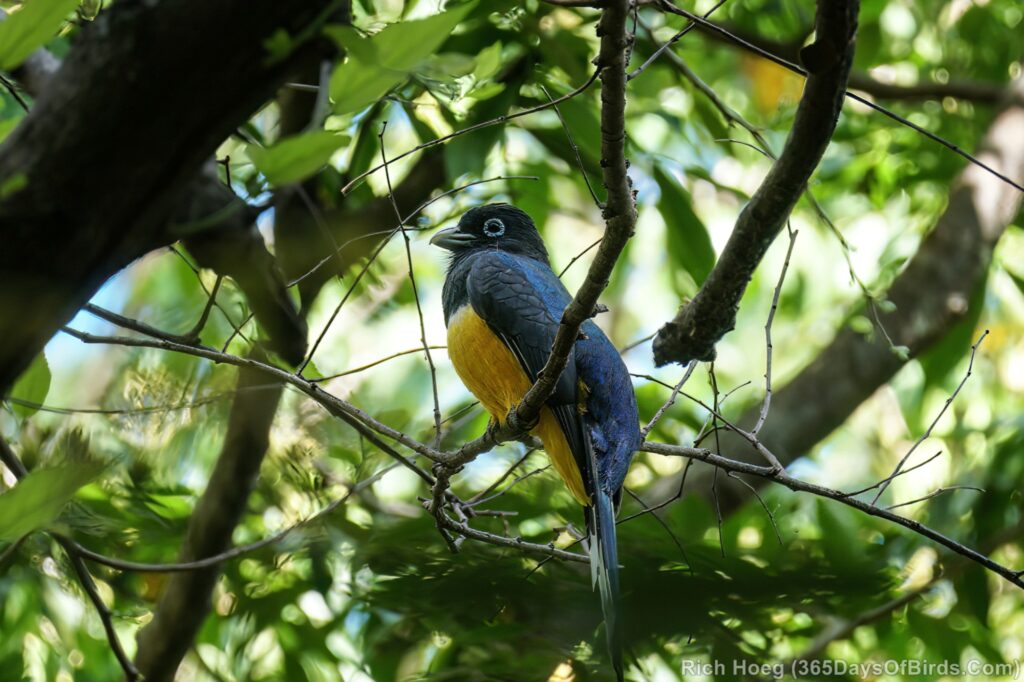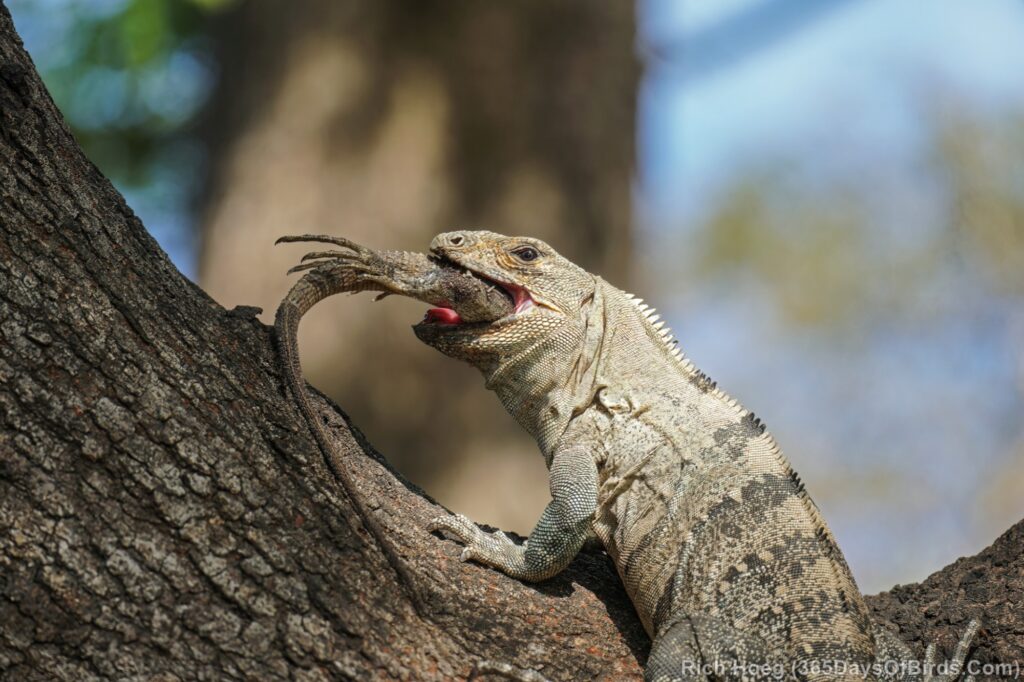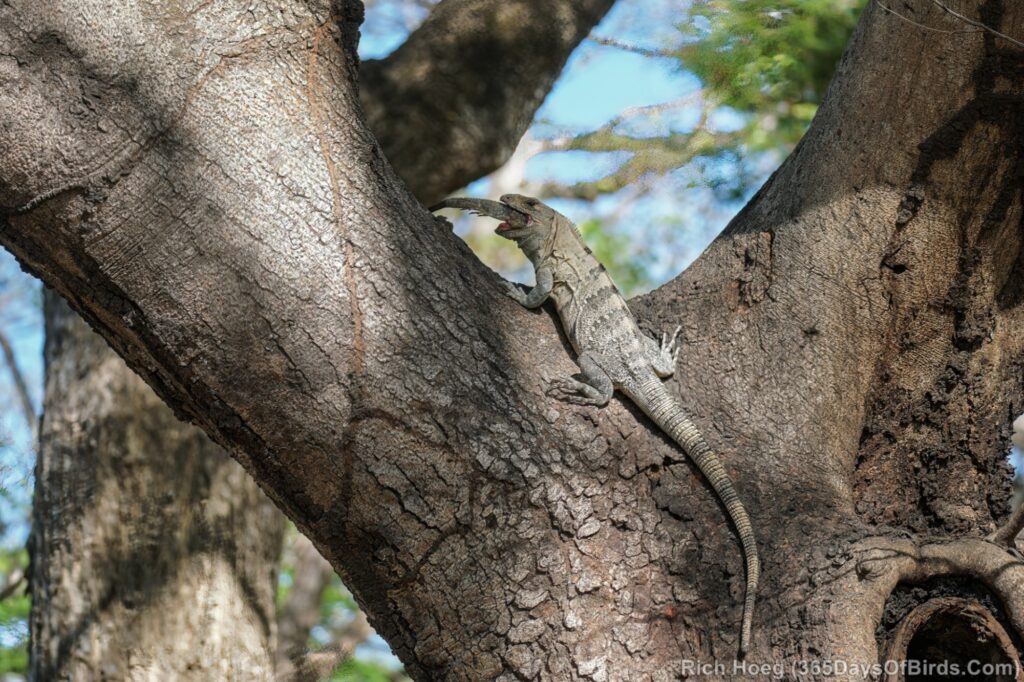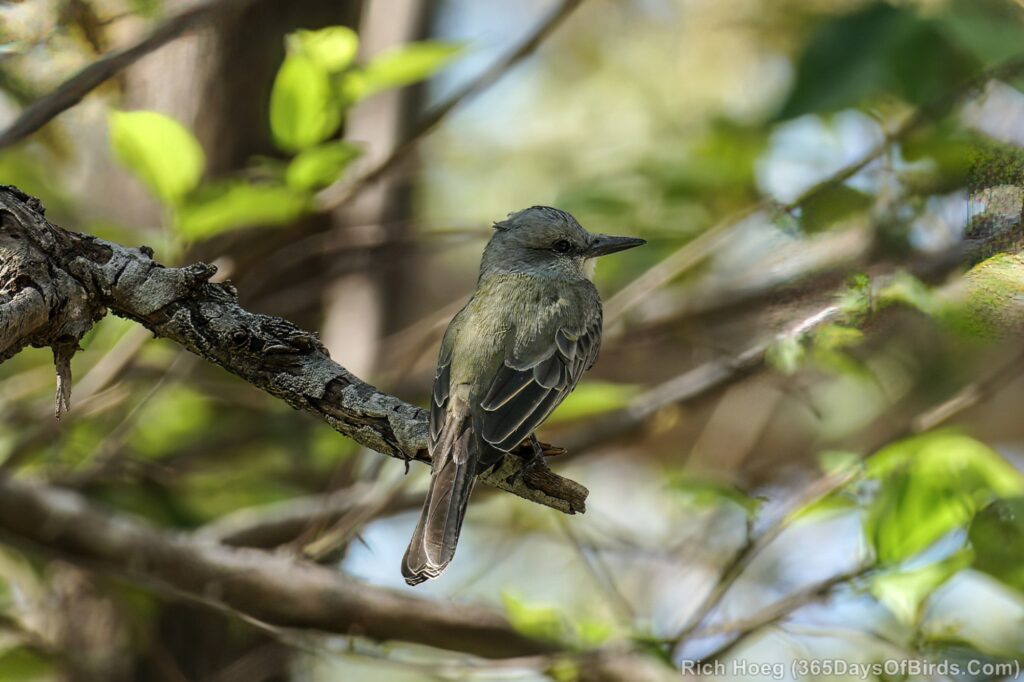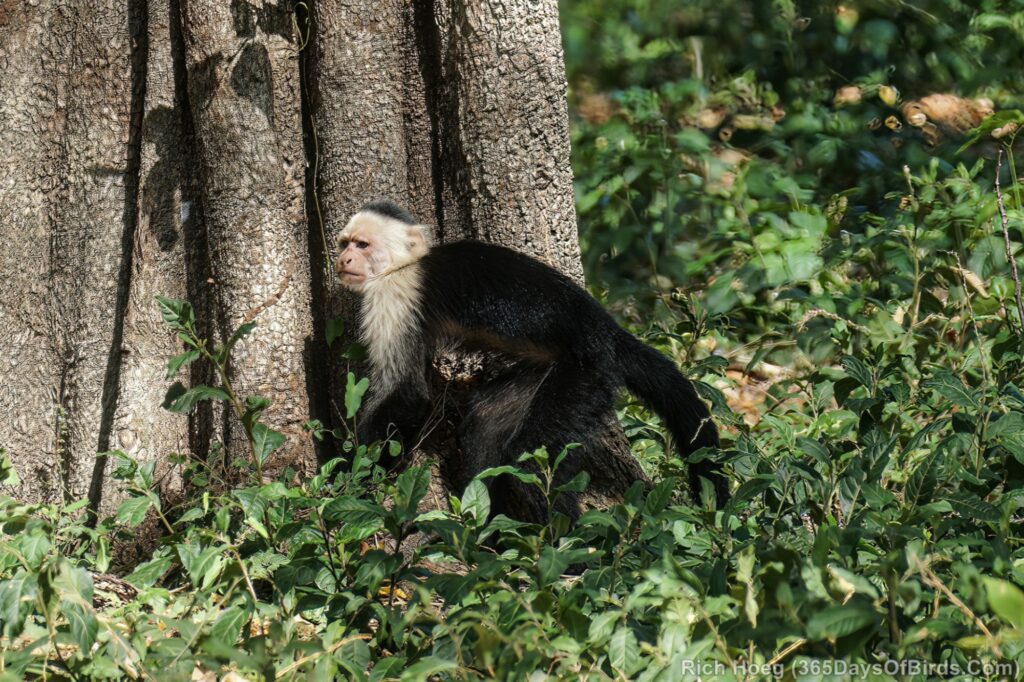If you are staying in Guanacaste (Las Catalinas area … dry forest habitat), and you have a 4wd vehicle drive up and over the extremely steep hill towards Zapotal Beach. I love to bird the region from the start of the road to the beach. Do not drive past the Steam Crossing. Assuming you head over early in the morning (like sunrise before the heat of the day), just park at the beginning of the road to Zapotal (wooden sign to beach) and walk the road. The combination of the stream / river on your left as you walk towards the ocean and the savannah habitat on your right makes for fantastic birding. The Pacific Ocean is less than 1/2 mile by foot, and Zapotal is an extremely private beach. I never see anyone there! (see my prior post with pics of the beach and a video). This morning I had Trogons, a Pale Billed Woodpecker, Turquoise-Browed MotMots, a Gray Hawk, Tropical Kingbirds and much, much more. Quite frankly the new golf course with its ponds have actually enhanced the birding since I last visited two years ago. Hopefully the savannah habitat will be left untouched.
Anyhow … from this morning! (the hawk is a life)
Gray Hawk (looks like a male Northern Harrier to me, but it is NOT!)
Pale Billed Woodpecker
Turquoise-Browed MotMots
Some Orange Fronted Parakeets from the prior evening … when these little guys actually slow down right before sunset … at Las Catalinas Town.
And sometime in the next few days … need to process the photographs … my trip to Hacienda El Roble. Birding started at 6:00 AM. Scarlet MaCaw spotted within moments. Shortly thereafter a Pygmy Owl, but I get ahead of myself.
